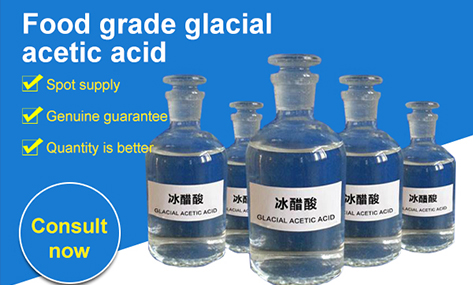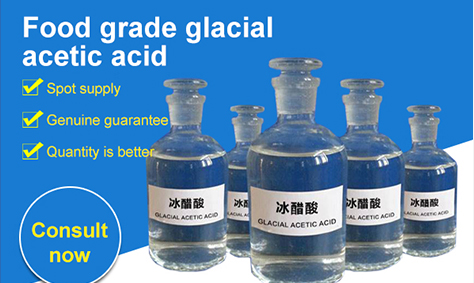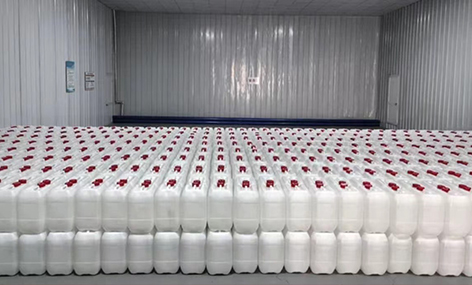
Авг . 01, 2025 01:20 Back to list
Food-Grade Glacial Acetic Acid-Hebei Yishan|Acidity Regulation&Flavor Enhancement
Acetic acid, also known as glacial acetic acid, is a colorless liquid with a distinct vinegar-like odor. It is a fundamental organic compound with the molecular formula CH₃COOH. In its concentrated form, it is referred to as "glacial" due to its ability to form ice-like crystals at temperatures below 16.6°C. This **food-grade glacial acetic acid** is specifically formulated for use in the food industry, adhering to stringent quality and safety standards.
As a key ingredient in food additives, it serves as an acidity regulator, flavor enhancer, and preservative. Its versatility makes it indispensable in various culinary applications, from seasoning to food preservation. The following sections delve into its technical specifications, uses, and the company responsible for its production.


Product Features and Technical Specifications
**Food-grade glacial acetic acid** is characterized by its high purity, with a minimum content of 99.8%. This ensures its effectiveness in food applications while minimizing impurities that could affect flavor or safety. Below is a detailed breakdown of its physical and chemical properties:
| Parameter | Specification |
|---|---|
| Molecular Formula | CH₃COOH |
| Purity | ≥ 99.8% |
| Odor | Stimulating, vinegar-like |
| Color | Colorless liquid |
| Melting Point | 16.6°C |
| Boiling Point | 117.9°C |
| Relative Density | 1.0492 |
| Refractive Index | 1.3716 |
The high purity of this acetic acid ensures it meets the requirements of the **Food Chemical Codex (FCC)** and other regulatory standards. Its ability to form solid crystals at low temperatures (hence the term "glacial") makes it ideal for applications requiring precise concentration control.


Applications in the Food Industry
Food-grade glacial acetic acid is a versatile ingredient with a wide range of applications. Its primary use is as an acidity regulator, helping to maintain the pH balance in food products. It is also used as a flavor enhancer, providing the characteristic sourness found in vinegar-based products. Below are some of its key applications:
- Edible Vinegar Production: By diluting glacial acetic acid with water to a concentration of 4–5%, it can be used to create edible vinegar. This vinegar mimics the flavor of brewed vinegar and is used in dressings, marinades, and condiments.
- Seasoning and Sauces: It is commonly used in tomato sauce, mayonnaise, rice sugar sauce, kimchi, and cheese to enhance flavor and preserve freshness.
- Canned Goods: It is added to canned tomatoes, asparagus, baby food, and seafood (e.g., sardines, squid) to improve taste and extend shelf life.
- Soft Drinks and Sweets: In beverages, candies, and baked goods, it acts as an acidulant, contributing to a tangy flavor profile.
- Pickling and Fermentation: It is used in pickles, broths, and sour cheese to create a preserved, acidic environment.
The **food-grade glacial acetic acid** is also employed in the production of flavoring agents and preservatives, ensuring consistency in taste and safety across various food products.
Advantages of Using Food-Grade Glacial Acetic Acid
There are several benefits to using **food-grade glacial acetic acid** in food manufacturing:
- High Purity: The ≥99.8% purity ensures minimal impurities, reducing the risk of off-flavors or safety concerns.
- Cost-Effective: Its concentrated form allows for easy dilution, making it a cost-efficient option for large-scale production.
- Regulatory Compliance: It meets the standards set by the **U.S. Food and Drug Administration (FDA)** and the **E260** food additive code.
- Stability: Its chemical stability ensures consistent performance in various food applications.
These advantages make it a preferred choice for food manufacturers seeking a reliable and effective acidulant.
Company Background: Hebei Yishan Spices Co., Ltd.
**Food-grade glacial acetic acid** is produced by Hebei Yishan Spices Co., Ltd., a reputable manufacturer based in Shijiazhuang, Hebei Province, China. The company specializes in the production of high-quality food additives, including acetic acid, and is committed to meeting international standards for safety and quality.
Hebei Yishan Spices Co., Ltd. adheres to **Good Manufacturing Practices (GMP)** and ensures its products are free from contaminants. The company's dedication to quality is reflected in its compliance with the **Food Chemical Codex (FCC)** and other regulatory frameworks.
For more information about the company, visit their **official website**.
Environmental and Safety Considerations
While **food-grade glacial acetic acid** is safe for food use, it is important to handle it with care. The compound is corrosive to metals and can cause skin irritation if not diluted properly. The **National Institute of Standards and Technology (NIST)** provides detailed safety data, including storage and handling guidelines.
According to **Chemicals Safety Facts**, the permissible exposure limit (PEL) for acetic acid vapors is 10 parts per million (ppm) over an 8-hour work shift. Proper ventilation and protective equipment are essential when working with concentrated acetic acid.
Conclusion
**Food-grade glacial acetic acid** is a critical component in modern food production, offering a combination of high purity, versatility, and regulatory compliance. Its applications span from seasoning to preservation, making it an indispensable ingredient for food manufacturers worldwide.
For further details about **food-grade glacial acetic acid** and its specifications, visit the **official product page** or contact Hebei Yishan Spices Co., Ltd. directly.
References
The information provided in this article is supported by authoritative sources, including:
-
Pure Glacial Acetic Acid Sale | High Purity, Bulk Orders
NewsAug.02,2025
-
Pure Glacial Acetic Acid for Sale - High Purity & Bulk Orders
NewsAug.01,2025
-
Food-Grade Glacial Acetic Acid-Hebei Yishan|Acidity Regulation&Flavor Enhancement
NewsAug.01,2025
-
Glacial Acetic Acid for Sale | GP-4-Turbo Grade Purity
NewsJul.31,2025
-
Food Grade Glacial Acetic Acid-Hebei Yishan Spices|E260 Food Additive&High Purity Acetic Acid
NewsJul.31,2025
-
Food Grade Glacial Acetic Acid-Hebei Yishan Spices|High Purity, Food Additive
NewsJul.31,2025
